The ephemeral arid and semi-arid plants of NSW demonstrate some extraordinary adaptations to climate, soils and microclimate! With an increasingly variable and warming climate, it’s worth understanding which plants might cope with the tough, hot and dry conditions.
Here are some of the landscapes and plants seen on a recent trip around western NSW and north west Victoria. It included White Cliffs (the white opal town), Broken Hill, Menindee Lakes, Mungo and Mildura.
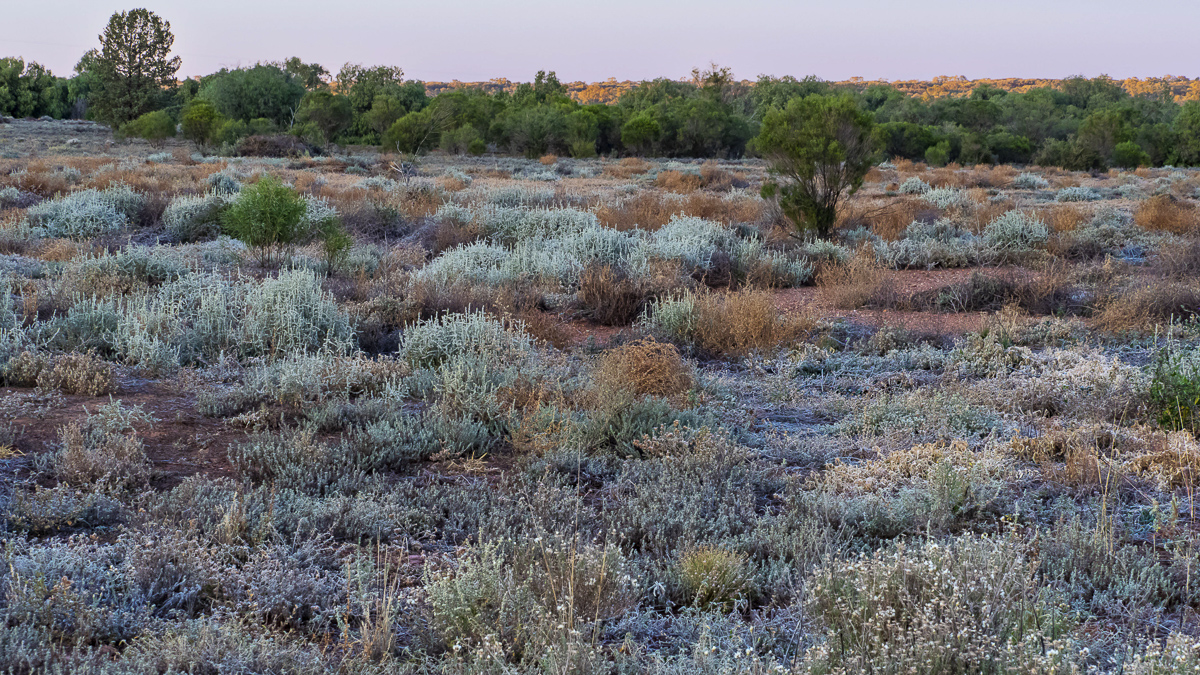
What’s an arid plant?
Australia is considered to be 70% arid/semi-arid. The definition of ‘arid’ is receiving under 250ml of rain pa and semi-arid being 250 – 350mm pa. Rain is not necessarily seasonal. It occurs over longer term cycles characterised by a boom/bust cycle of droughts and floods and hot dry summers and cold winters.
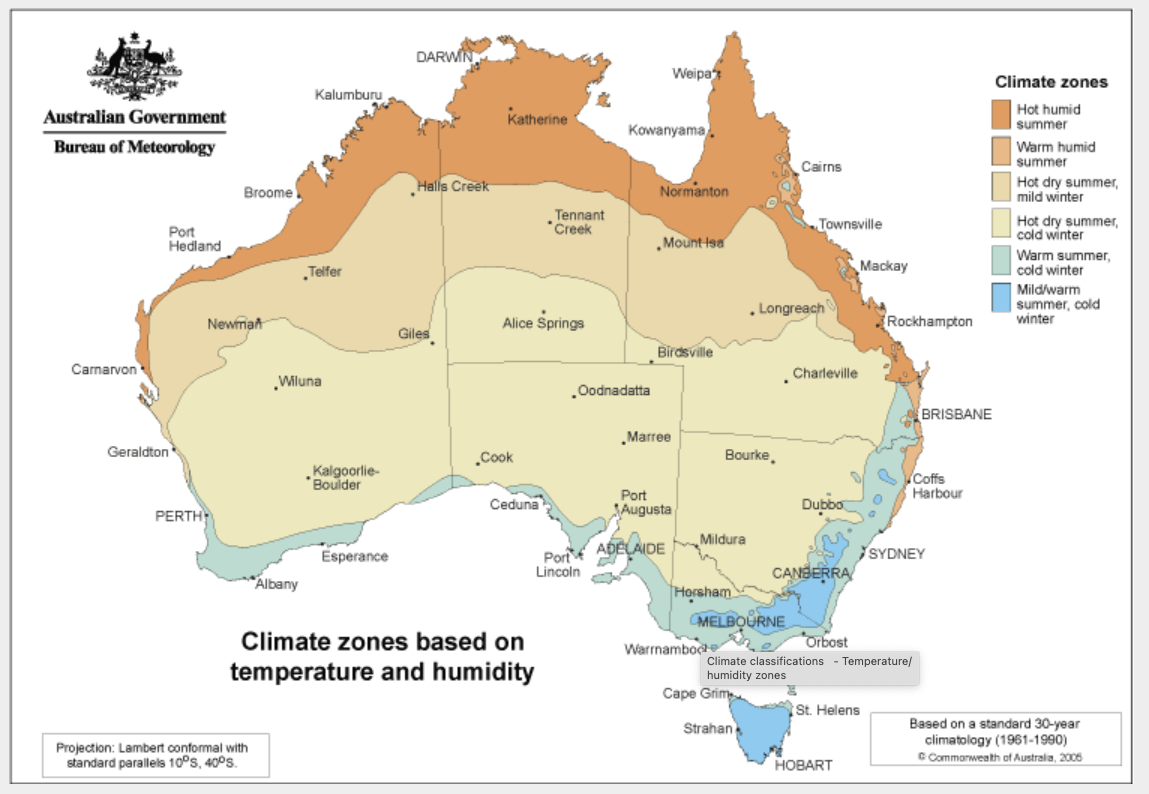
The ‘deserts’ of NSW include grasslands, shrublands, woodlands and swamplands. Chenopod and acacia shrublands dominate. Drought and salt tolerant species thrive including Sclerolaena (burrs), Atriplex (salt bush), Maireana (bluebushes, cottonbush), Chenopodium, Rhagodia, and acacias.
The flora of these regions show some wonderful survival and reproduction adaptations. Adaptations are physical and behavioural. They include modified leaves and stems for storing water and preventing water loss and deep penetrating roots with water storage capability and ability to re-sprout after fires.
Here are some of the plants you might see in these regions, many with broader horticultural potential.
Wilcannia and White Cliffs
A number of plants, rarely seen on the east coast were seen near Wilcannia. Eremophila duttonii and Flindersia maculosa (Leopard Wood) grew by the side of the road. The Leopardwood tree has beautiful mottled bark and may work well in a raised bed.
Dissocarpus paradoxus (Cannonball), Hard-headed Saltbush, looks attractive. Yet the fluffy fruit breaks down and five nasty spines appear. It is perfect for sticking into feet or animals. Maybe we’ll leave that where it is!

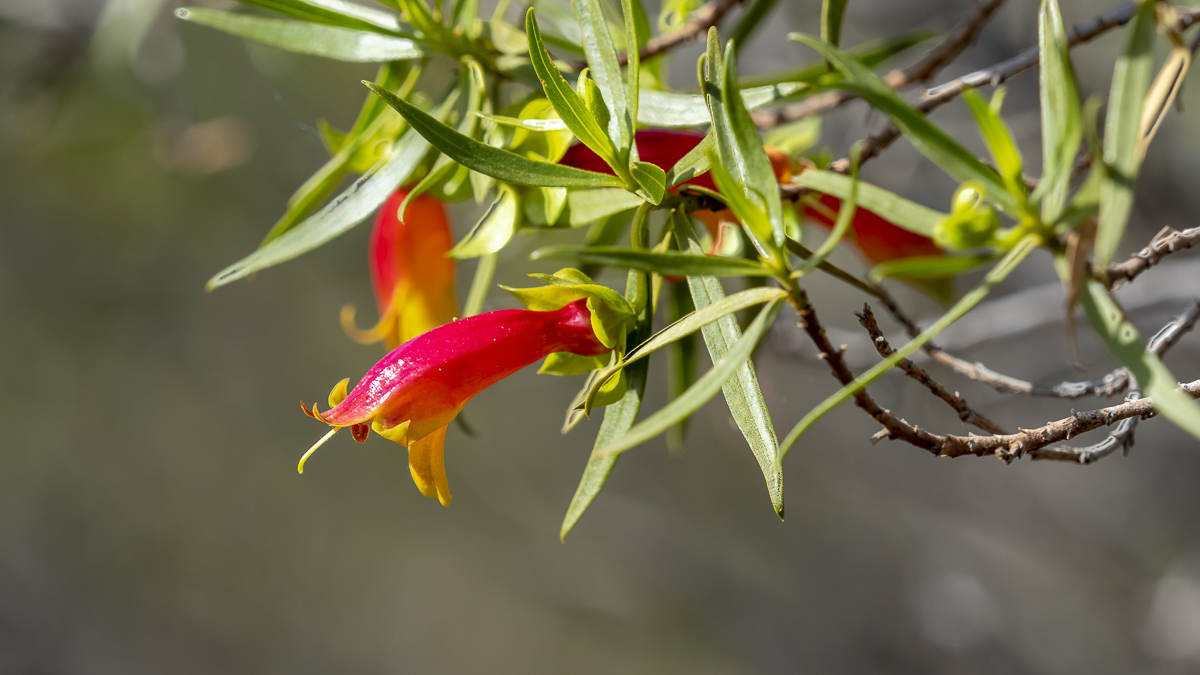
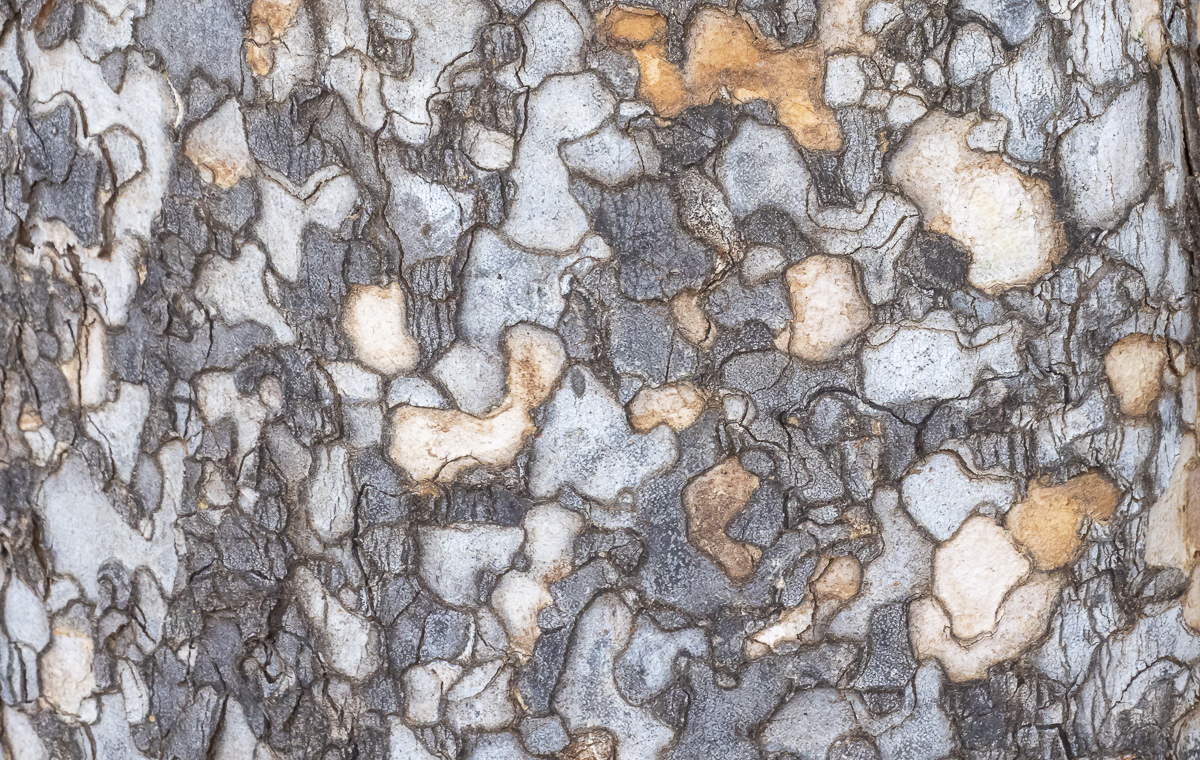
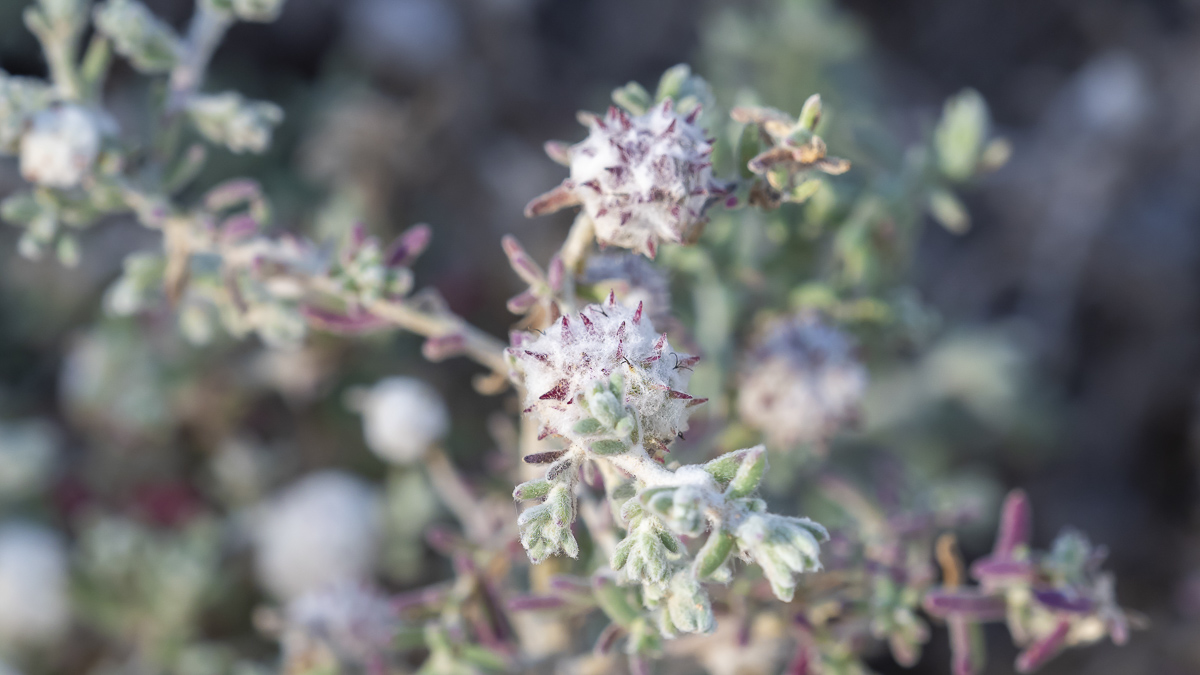
The Maireana was beautiful with its soft delicate flowers and succulent looking leaves. There are 57 Maireana species in Australia, all endemic. The fruits superficially resemble flowers, being small flat discs, which are often red or yellow in colour.
Maireana has made its way into cultivation as a highly ornamental and hardy shrub. Plant singly for contrast or as a feature in wider verges or grouped as an informal hedge, screen or wind-break. Tolerates moderate coastal exposure and calcareous soils. Requires well-drained soils.
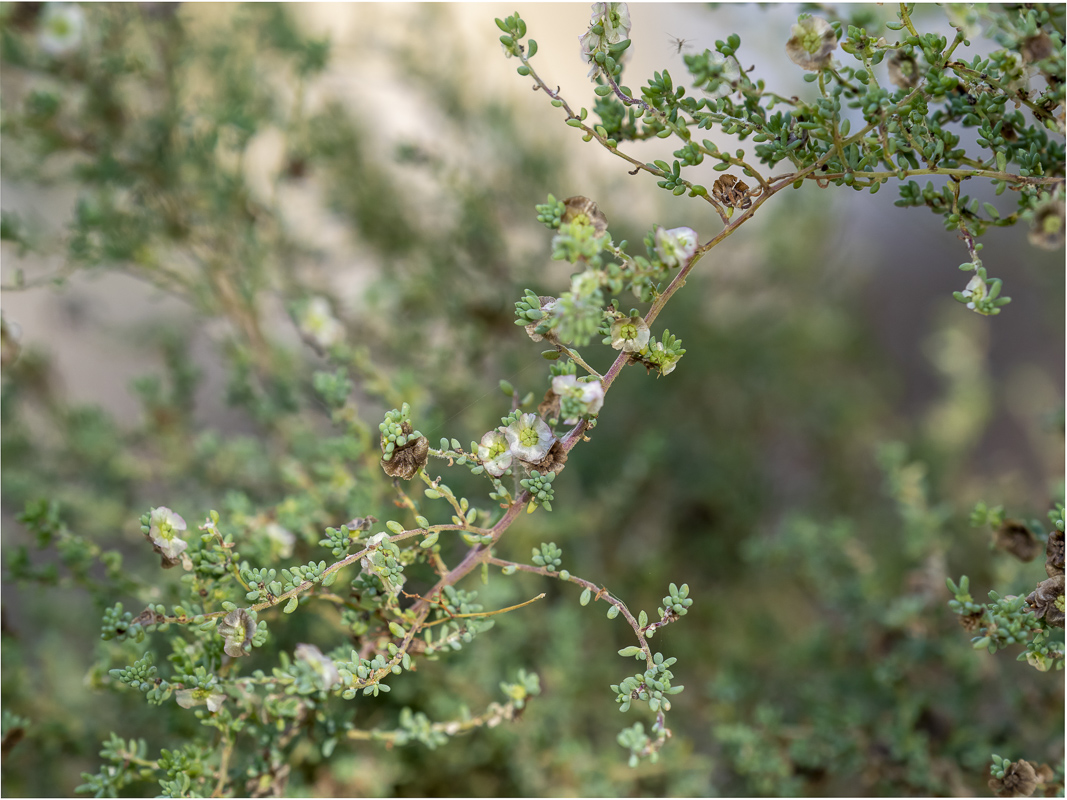
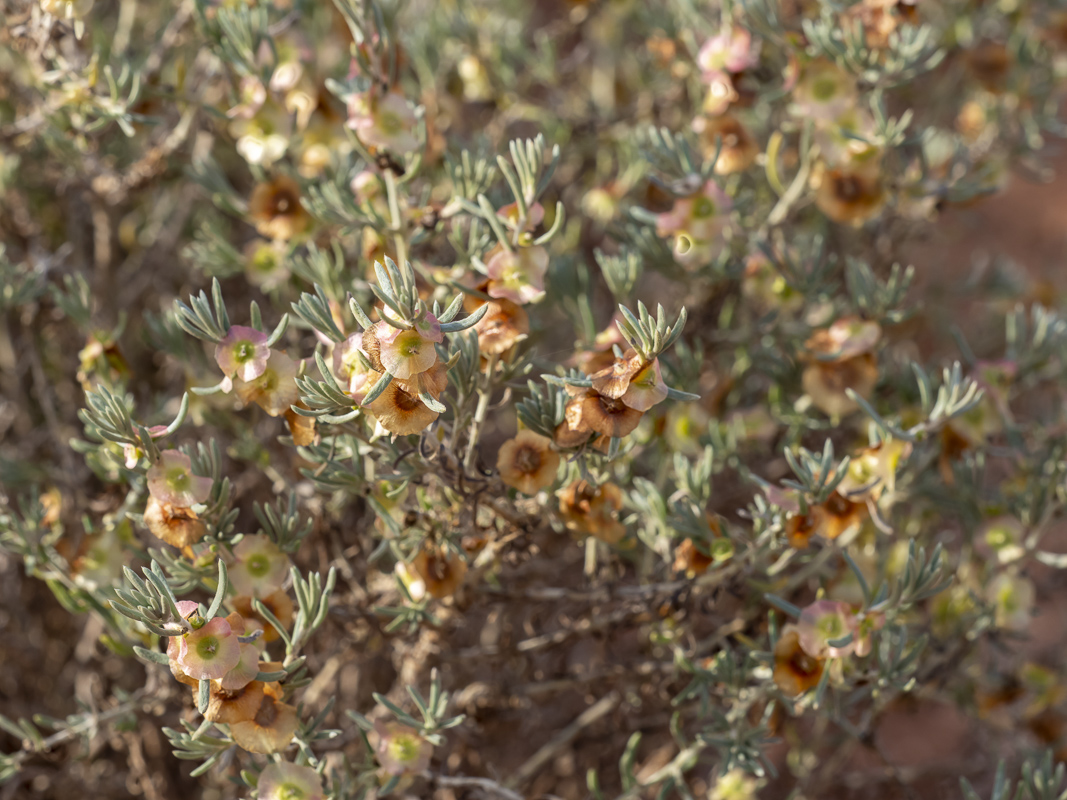
White Cliffs
The plains around White Cliffs are masses of grey foliage low shrubs (saltbushes, bluebushes, copperburrs) and a few acacia trees.
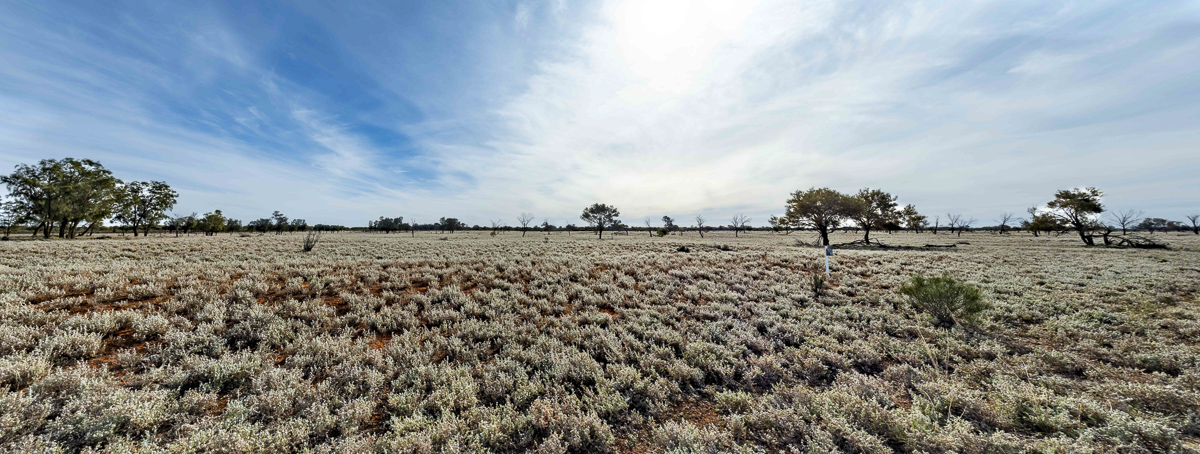
Wandering amongst the diggings of White Cliffs (famous for its white opals), I saw Ptilotus sp. (possibly P. spathulatus). Ptilotus contains about 120 species, with most coming from the Pilbara. They are herbs or small shrubs often with pink flowers that hang down like a tail. Their common name is pussycat, lambs or fox ‘tails’. One of the Aboriginal names that has stuck is ‘Mulla Mullaa’. They are endemic to Australia. The ones seen in White Cliffs had creamy coloured flowers.
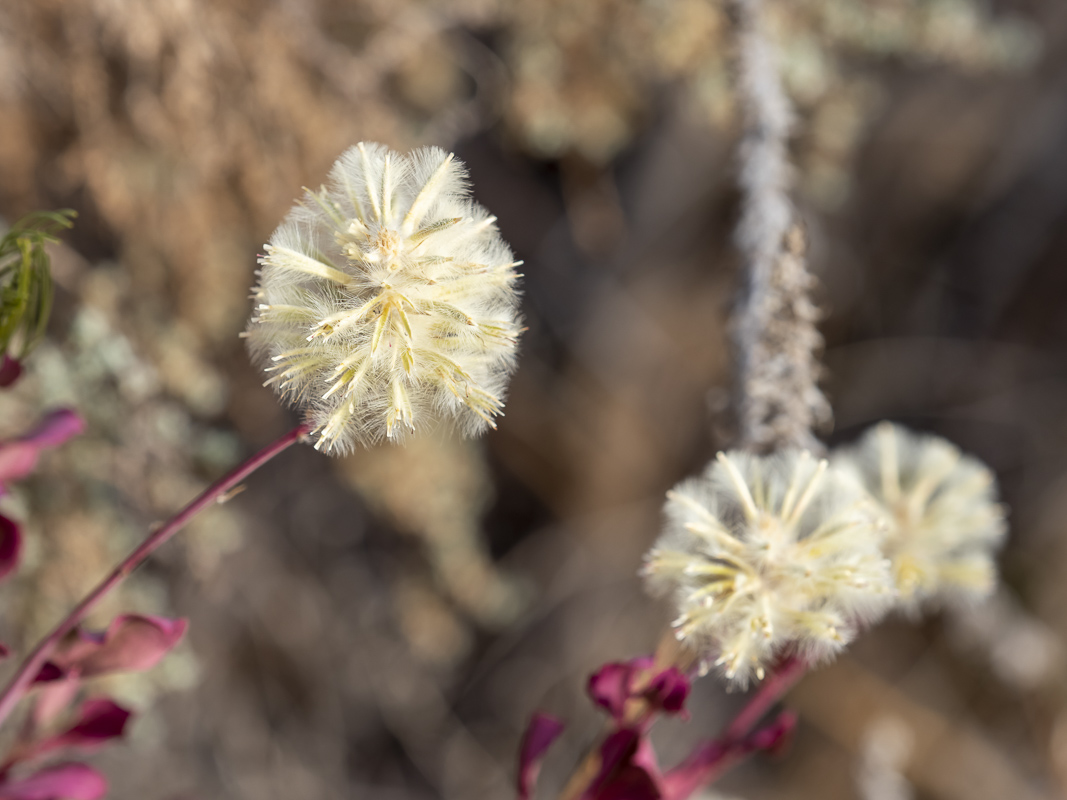
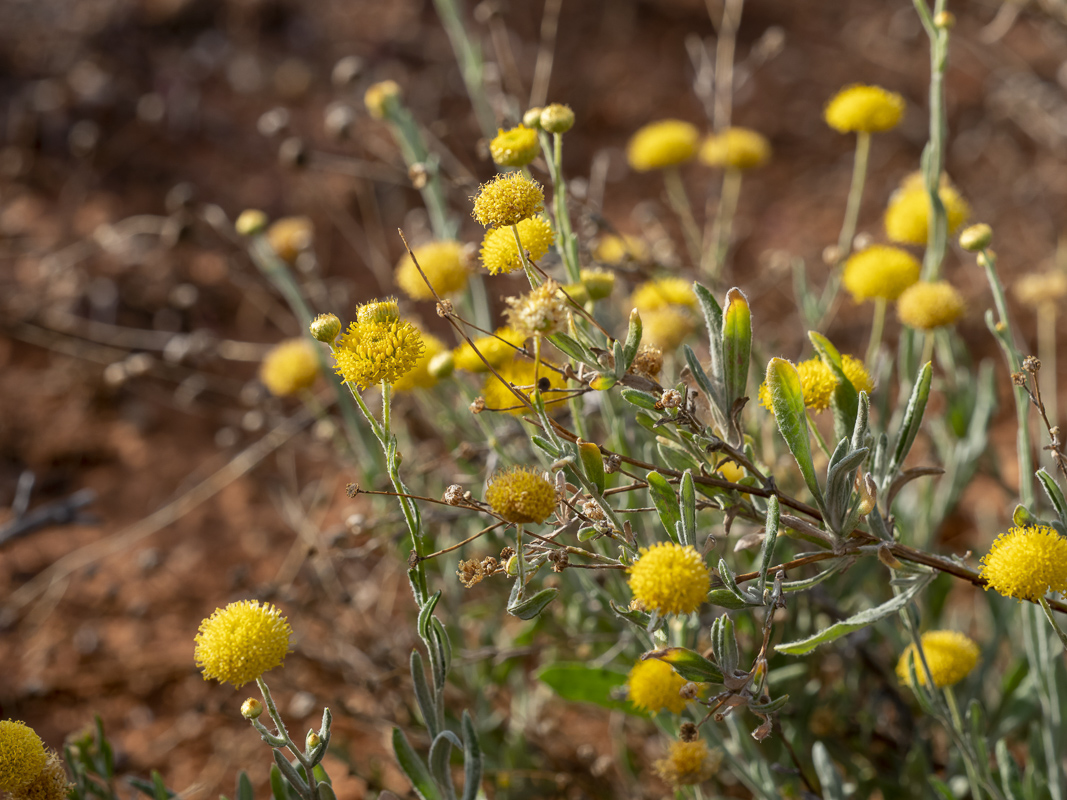
Several of the Asteraceae family were flowering including Gnephosis sp and Olearia sp. Given the diggings, it was a surprise that anything could survive, yet I found quite a few species popping up around the mine shafts.

White Cliffs, image Heather Miles
Onto Broken Hill
A highlight of Broken Hill was the Living Desert State Park. Nestled amongst the Barrier Ranges, it is a 2400 ha reserve which includes the Living Desert Flora and Fauna Sanctuary. The Sculpture Park is close by and worth seeing.
Flora included the restricted range Eucalyptus gillii, with a common name of Curly mallee or Silver mallee. It is an attractive small tree and grows naturally in sandy soil and may be worth a place in the garden if you have room. The lovely yellow flowers and attractive buds make a lovely addition.
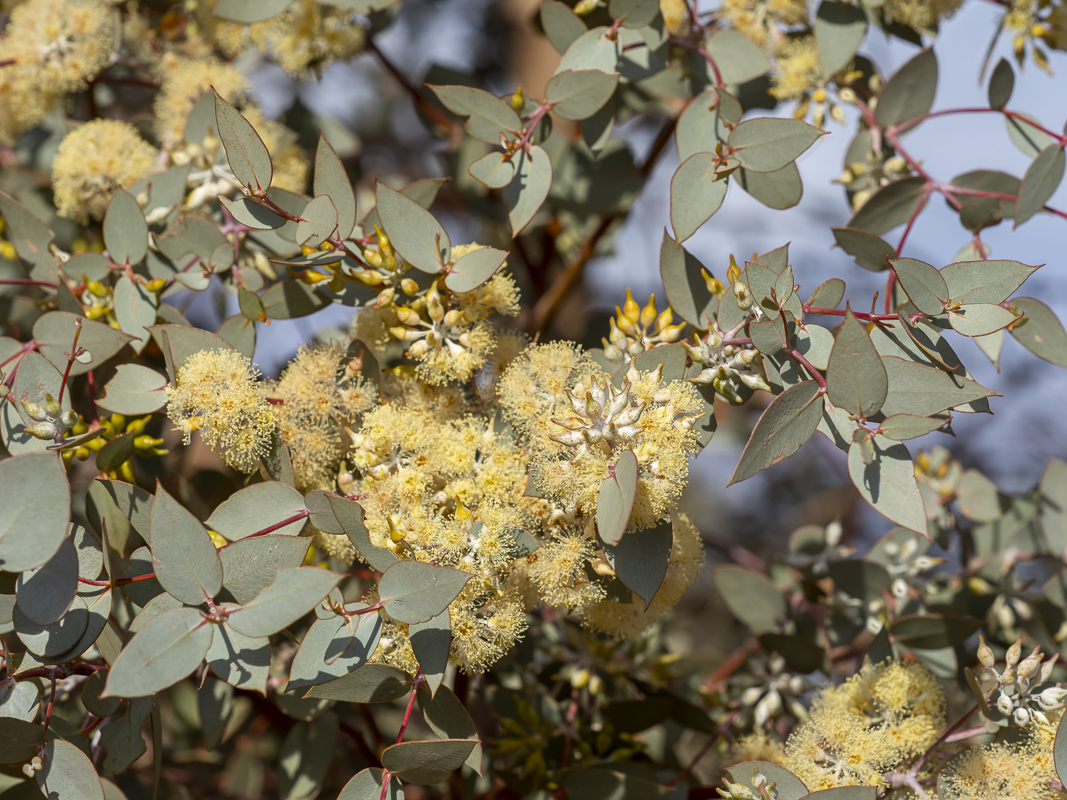
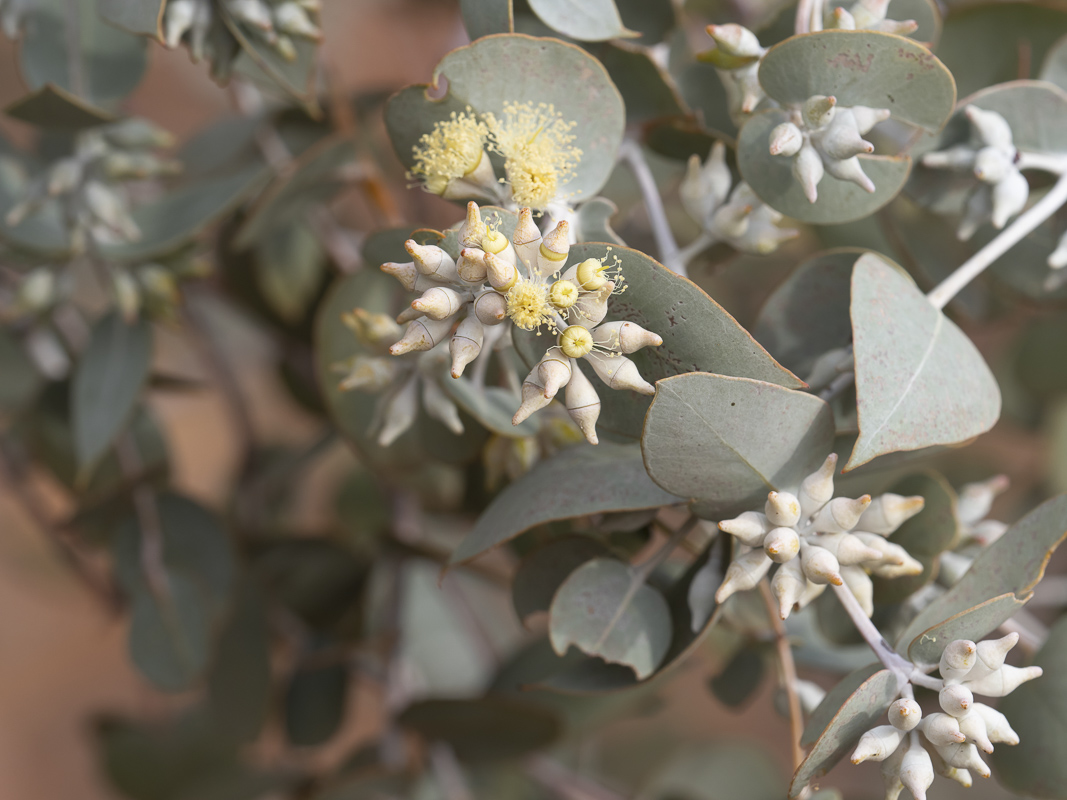
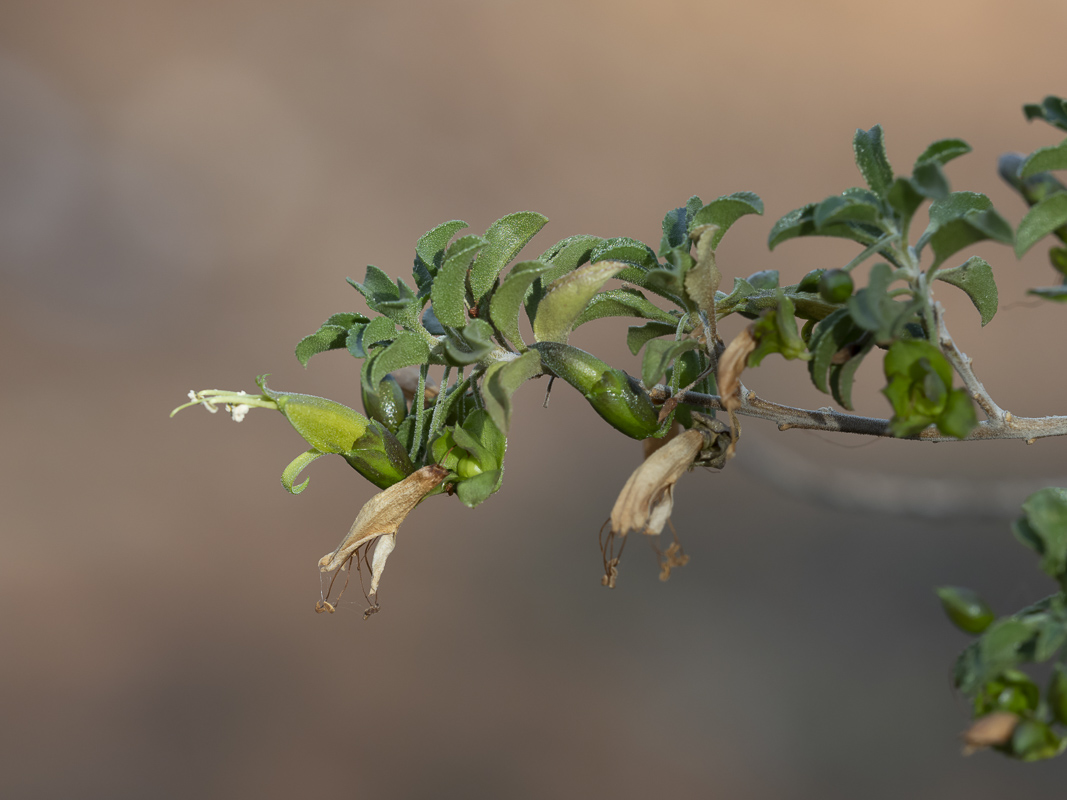



Other plants on show included Eremophila serrulata (Green Fuchsia), Olearia pimeliodes, Ptilotus obovatus and Solanum sturtianum. Solanum sturtianum is probably not a good candidate for the garden, given its poisonous berries.
Traditional uses of plants
Acacia tetragonophylla (Dead Finish) is a rather straggly shrub growing 2 – 3m high. Each flower is on a single stalk.
Its common name is believed to have two causes i.e. ‘when the cows start eating the Dead Finish bush, everything else has died’ or ‘in a bad drought, this is the last bush to die’. The Aboriginal name for the plant, from the Warlpiri language is ‘Kurara’. The Arrernte name is ‘Arlketyerre’, source.
The Arrernte people use the sharp spiky leaves to treat warts. The bark from roots is steeped in water to make an antiseptic solution for treating sores. First Nations people gather the seeds and grind them for cakes. They eat the seeds raw.
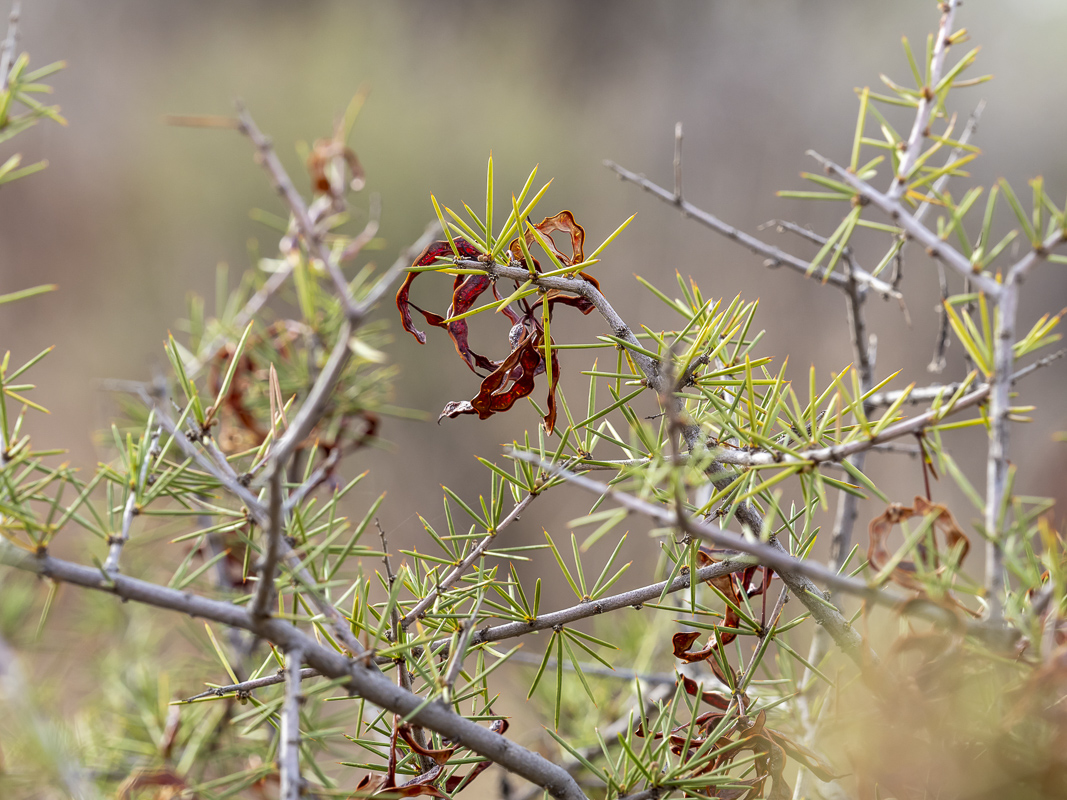
This image, looking west from Broken Hill, brought home to me the extraordinary emptiness, and beauty of our Australian landscape.

Menindee Lakes
Originally the lakes were a series of natural depressions on the Darling River. During the mid 20th century, the lakes were modified for water conservation . The NSW Government agreed with the Australian, Victorian and South Australian governments that the water would be shared to meet downstream water needs when the lake volume reached certain levels.
There were major fish kills of 2018 and 2019, where many believe over a million fish died. The causes are not fully known. Issues which contribute to the problem inclue low water flows, over-distribution of water and high temperatures around that time leading to blue-green algal blooms. Additional fish kills occurred in 2023, with the incident being investigated by the EPA.
At the time of our visit, Menindee Lakes were full. The landscape was a magnificent sight, and the birds were extraordinary in numbers. Aerial shots show the lakes and landscape.

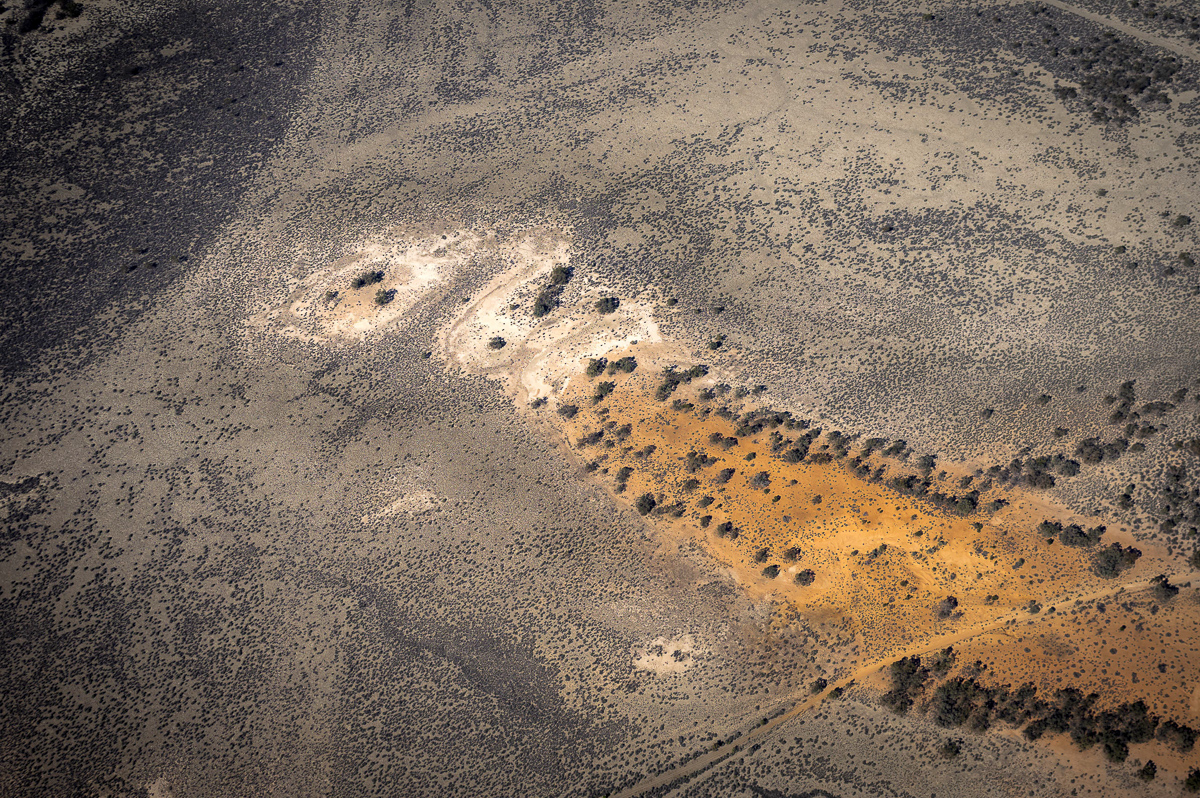
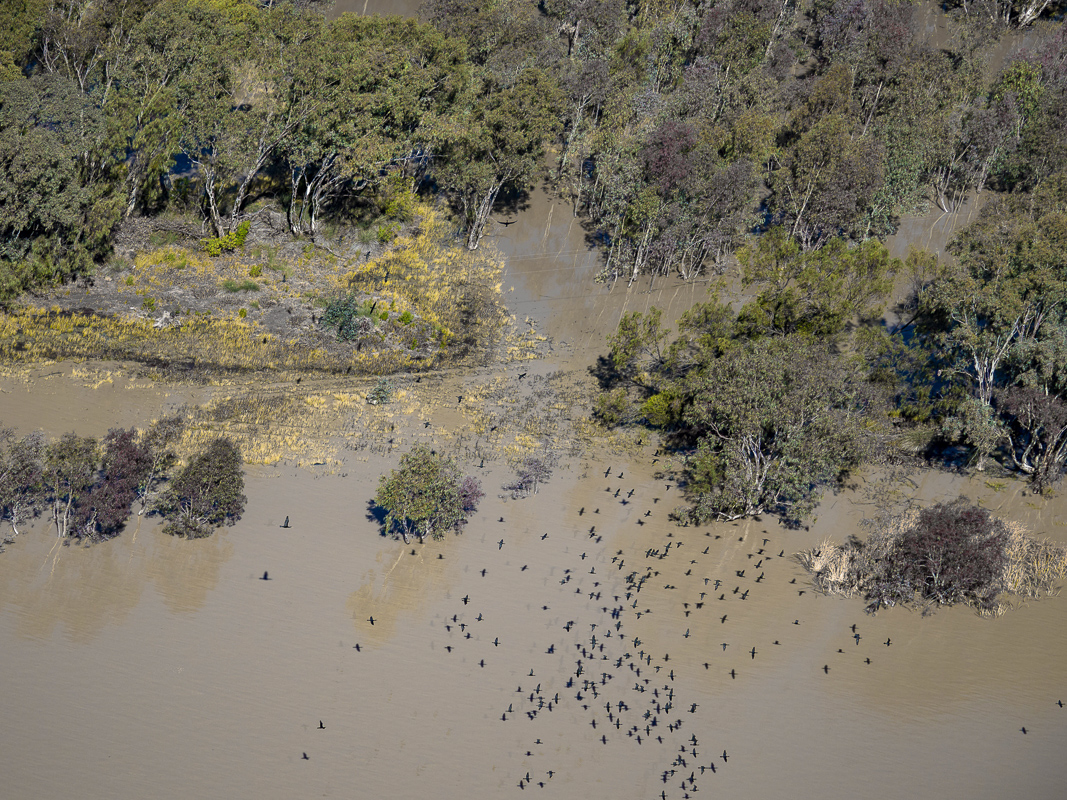
As the sun set, the birds went wild. Large flocks flew overhead and settled on the inundated trees, as I attempted to capture the stunning landscape! And we did see some saltbush on the way.
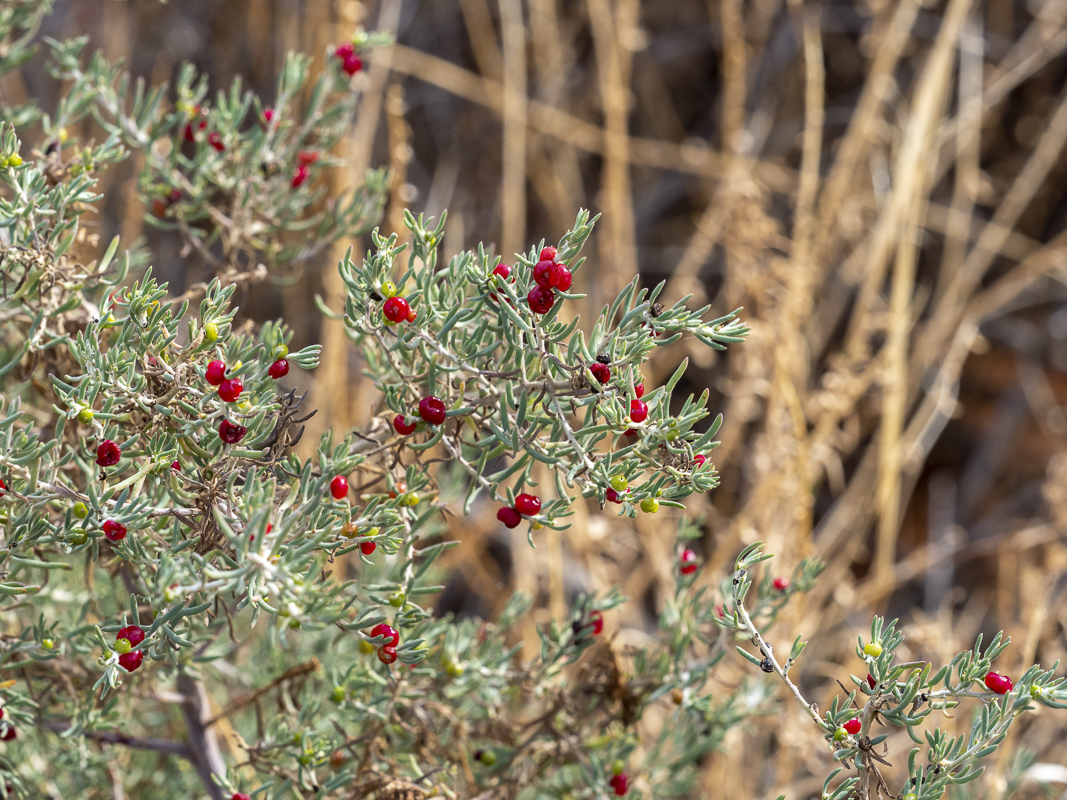
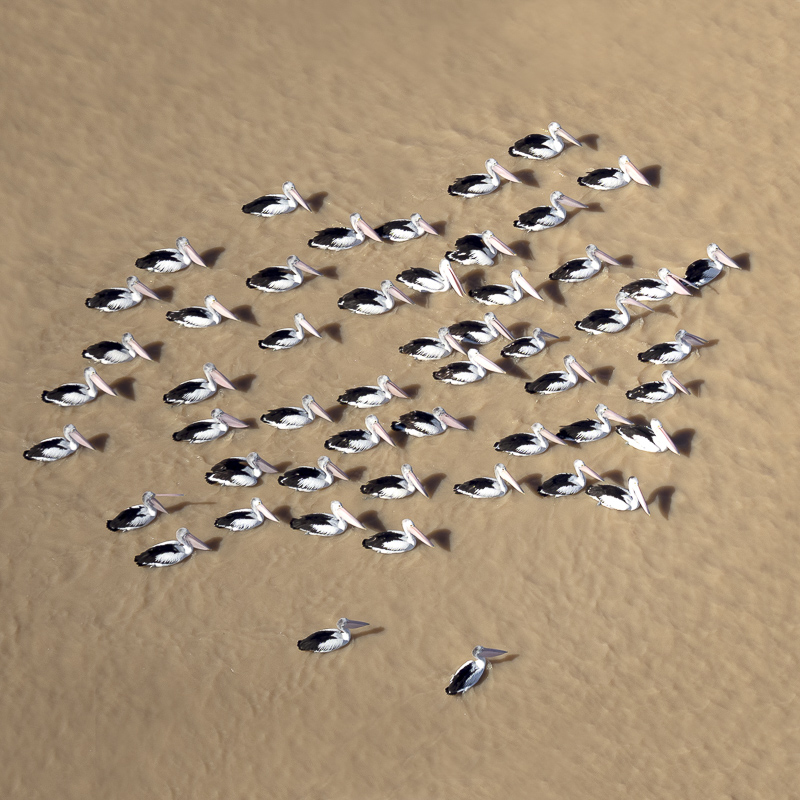
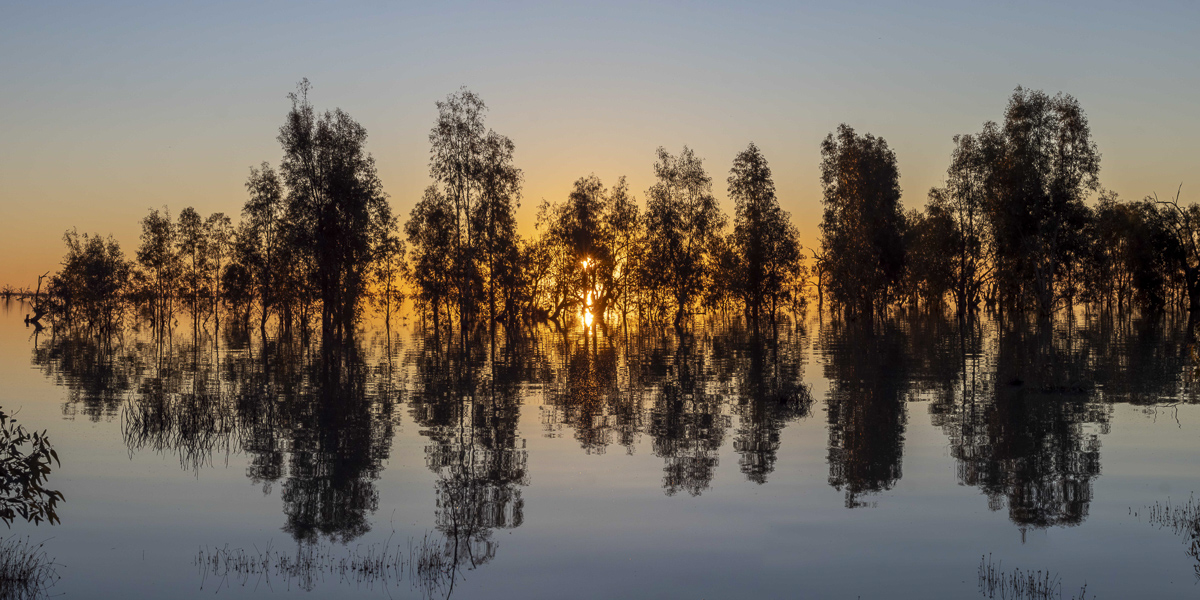
Mungo National Park
Lake Mungo dried up over 14,000 years ago. It is home to the earliest modern human remains found in Australia, with Mungo Man and Mungo Lady dating back 40,000 years. It is a rich fossil area.
We were rained out of Mungo. There was no chance to do much botanising, apart from a couple of trips to the Walls of China. The park on the way in and the Walls of China fit our normal view of ‘desert’ – being an area of red sand dunes, very sparsely vegetated.
The drive out again was a bit hairy – 5 minutes notice to LEAVE! Apparently just 5mls of rain creates a quagmire of red slush, that takes a week to dry out.

Mildura, the Australian Inland Botanic Garden
I really enjoyed this garden with many of the arid and semi-arid plants on display.
The concept of a semi-arid botanic garden was the brainchild of three scientists from CSIRO who brought it to the attention of Mildura Council back in 1983. In the garden, the plantings showcase native and exotic species from semi-arid regions.
There was a magnificent field of Swainsona formosa, Sturt’s Desert pea, with its blood-red flowers.
There are 85 species of Swainsona globally. Only one is not endemic to Australia. Most are prostrate. Some Swainsona produce a phytotoxin that causes disease in cattle when ingested. The sickness is referred to as ‘peastruck’.

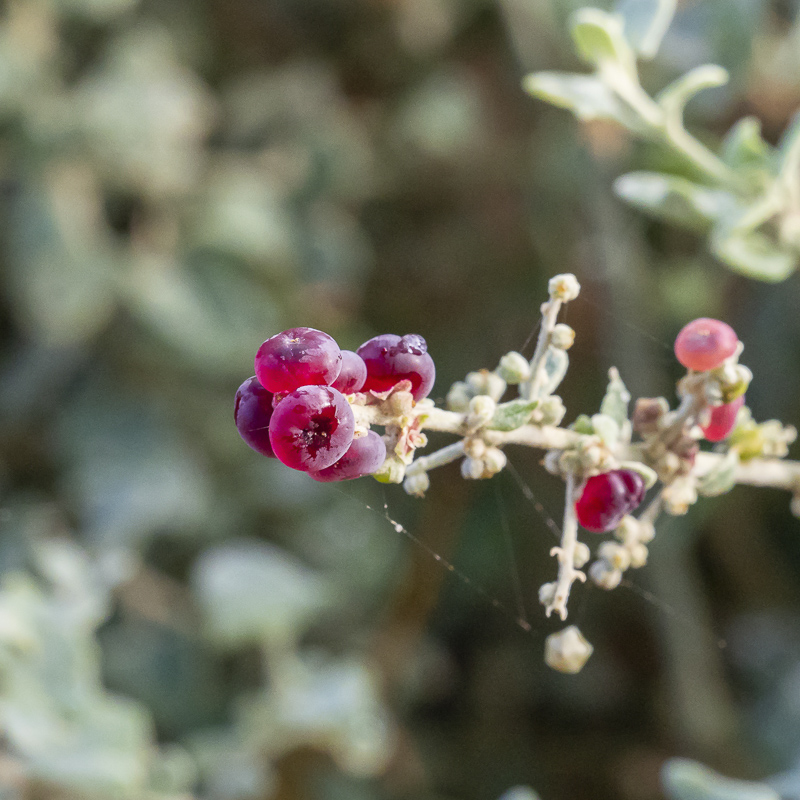
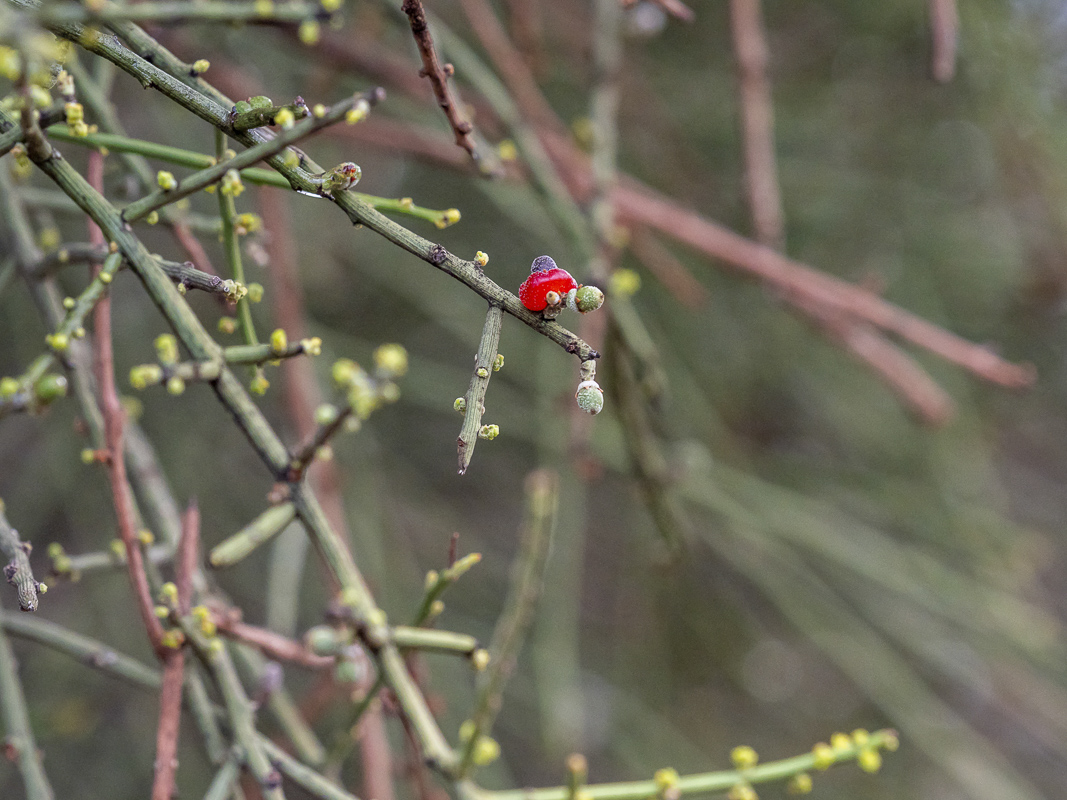

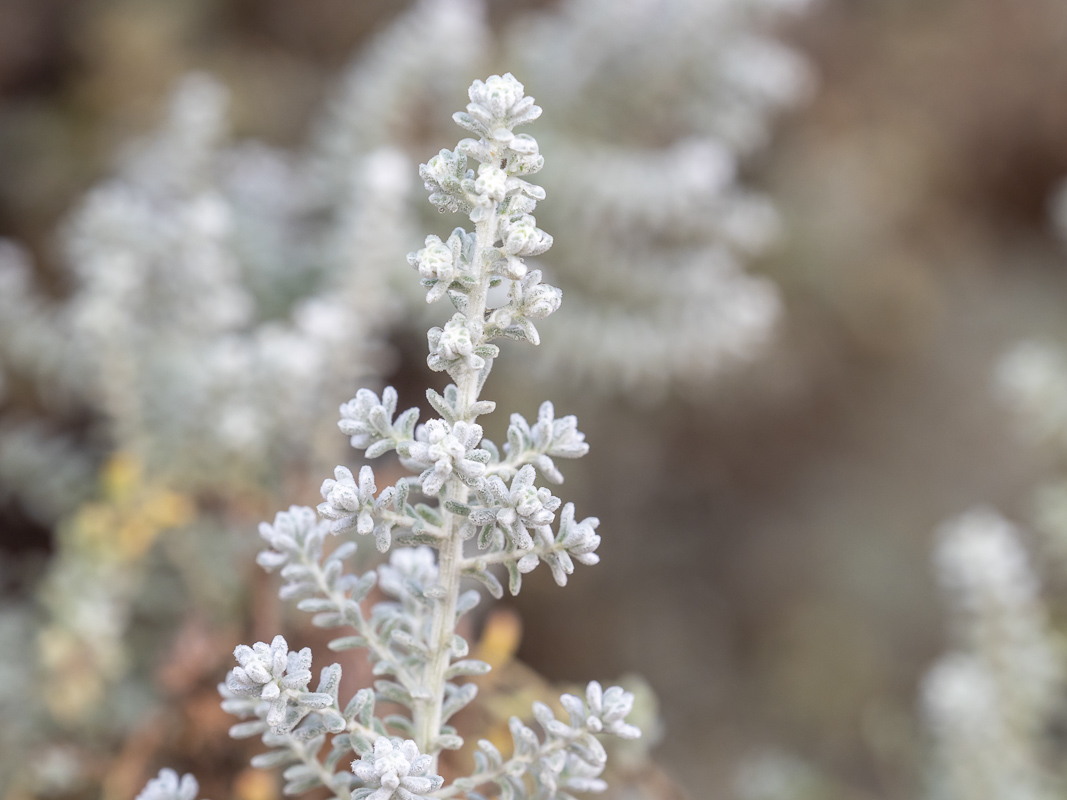
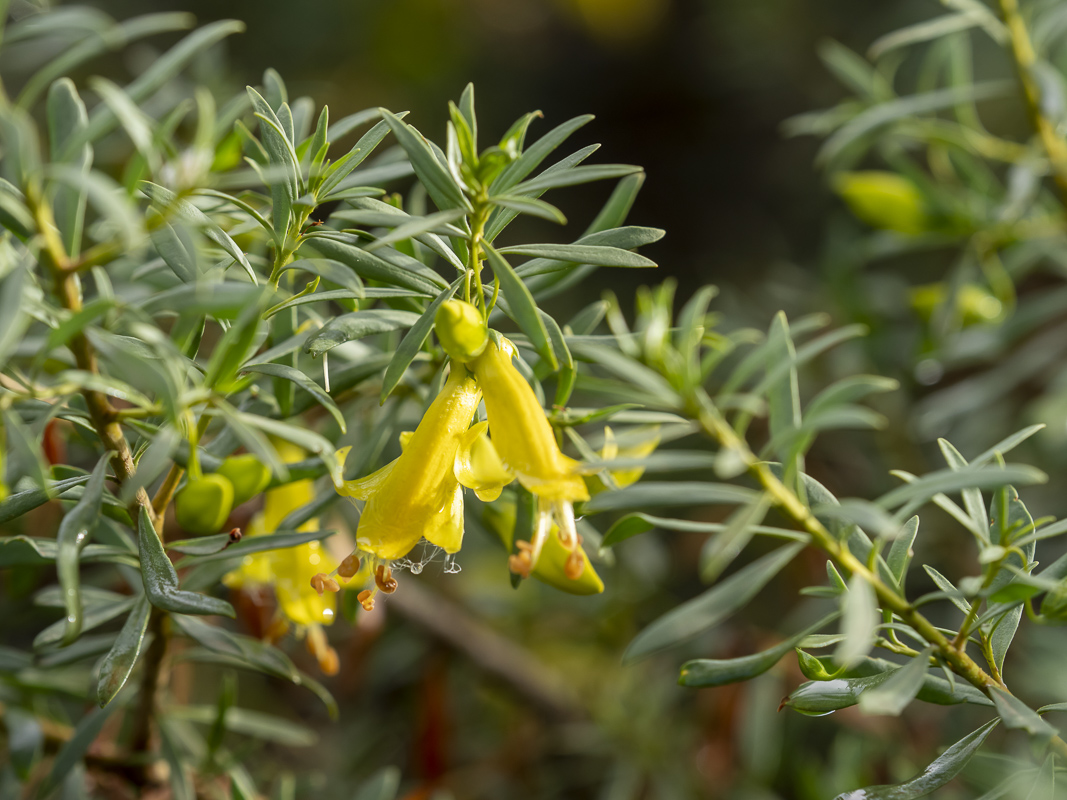

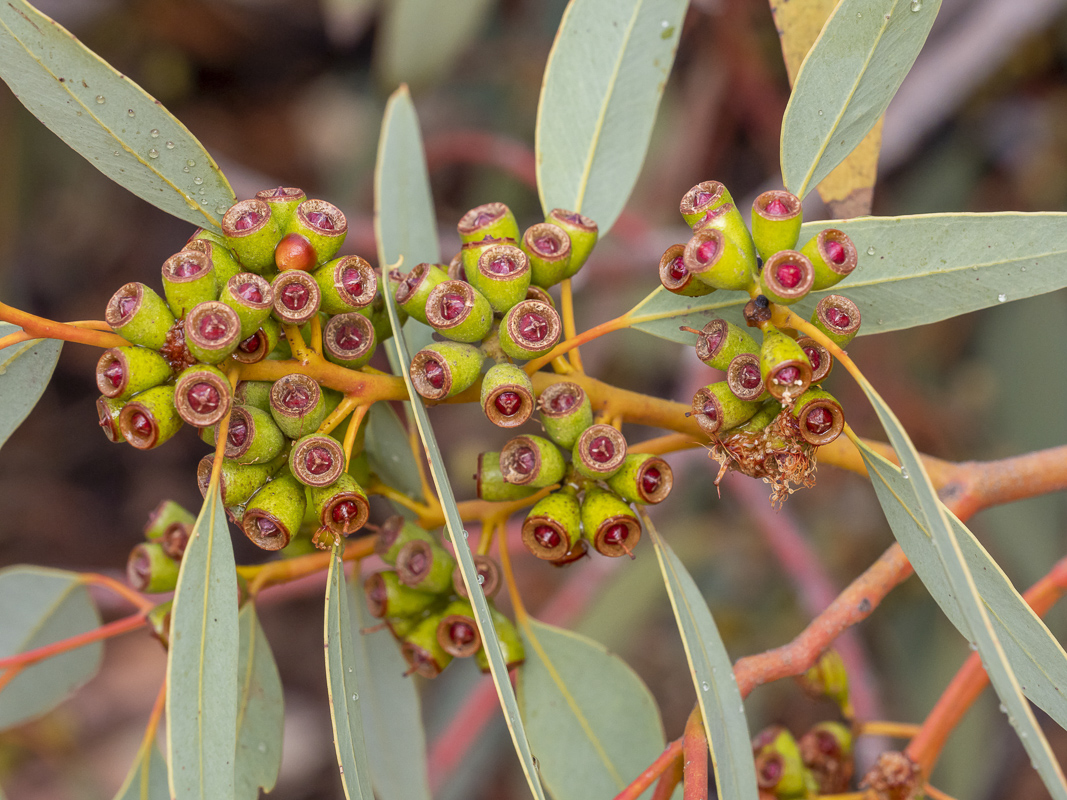
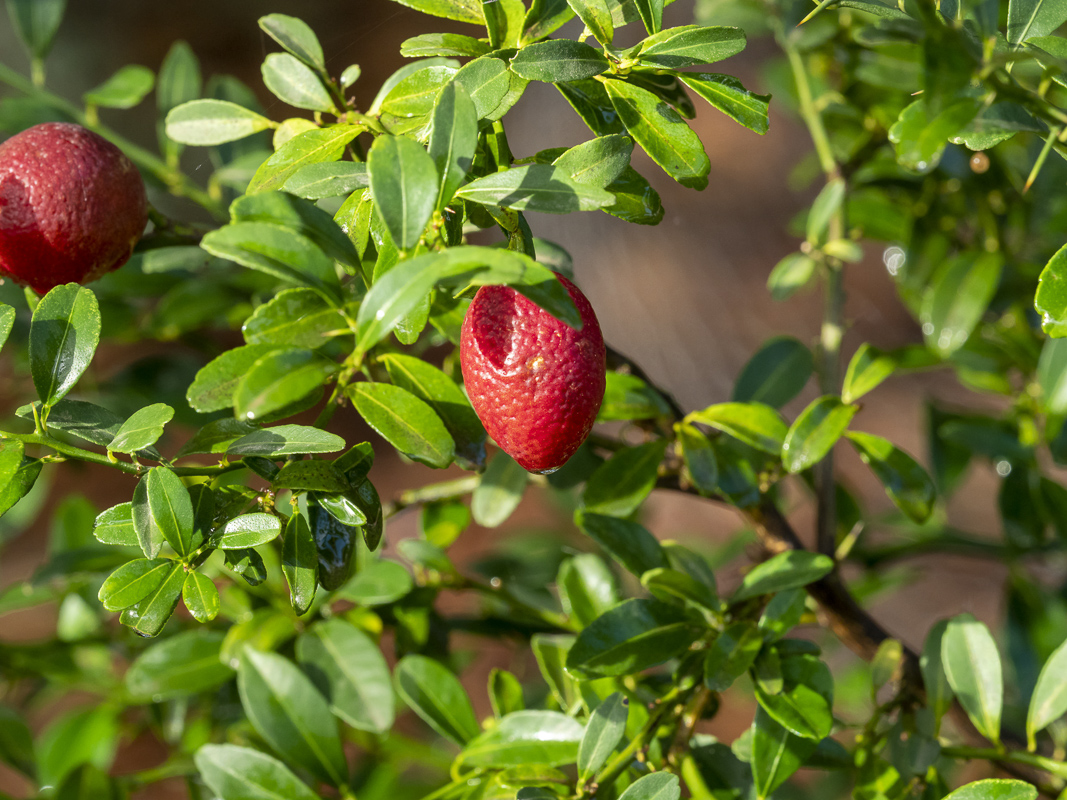
Many species on show
I saw many other species in the garden:
- Rhagodia spinescens – attractive silvery foliage, good for a hedge, many soil types tolerated and purportedly fire retardant
- Maireana sp – silvery or succulent leaves, attractive bracts
- Exocarpus aphyllus – unique looking plant with no obvious leaves, grows as a shrub or small tree with tiny red berries
- Eremophila sp – a wide range of lovely plants often with grey green or even white foliage!
- Ptilotus exaltatus – a stunning small plant. It is often treated as an annual in the garden.
- Eucalyptus oleosa – a mallee which purportedly can be burned many times as the lignotuber will keep sprouting. Local Aboriginal people advise that water can be extracted from the unearthed roots of the tree.
- Citrus australasica x native lime – deep red fruits with pink tinged flesh on the inside. This is a cross between the Finger lime (Citrus australasica) and the Burmese Rangpur lime (Citrus x limonia). The cross’ fruit is more juicier than the finger lime.
This garden is worth a visit. The opportunity to wander paths and explore the many arid and semi-arid plants is a lovely experience. There ispotential for many of our gardens across the continent as the climate alters.
References
Australian Government, Department of Climate Change, Energy, the Environment and Water, Outback Australia – the rangelands, https://www.dcceew.gov.au/environment/land/rangelands
Cunningham, W. E. Mulham, P. L. Milthorpe and J. H. Leigh, 2011, Plants of Western NSW, CSIRO Publishing, ebook
Ecosystem guides, a field guide to the planet by Damon Ramsey, Plants, https://www.ecosystem-guides.com/plants-of-Australian-desert-shrublands.html
Gardening with Angus, https://www.gardeningwithangus.com.au/native-lime-citrus-hybrid-red-centre-lime/
NSW government, Office of Environment and Heritage, Bioregions of NSW, Broken Hill Complex, https://www.environment.nsw.gov.au/topics/animals-and-plants/biodiversity/bioregions/bioregions-of-nsw/broken-hill-complex
NSW National Parks and Wildlife Service, Desert and arid shrubland environments, https://www.nationalparks.nsw.gov.au/environments/deserts-and-arid-shrubland-environments
NSW National Parks and Wildlife Service, Mungo National Park, https://blog.nationalparks.nsw.gov.au/mungo-national-park-the-land-frozen-in-time/?_ga=2.176399009.546750062.1688699760-476872297.1663887453
M.E. Westbrooke, M.K.C. Kerr and J. Leversha, 2001, The vegetation of Kinchega National Park, western New South Wales, NSW Government, Royal Botanic Gardens Sydney, https://www.botanicgardens.org.au/sites/default/files/2023-06/Volume-7%281%29-2001-Cun7Wes001-1-26-%281%29.pdf
 Australian Native Plants Society (Australia)
Australian Native Plants Society (Australia)